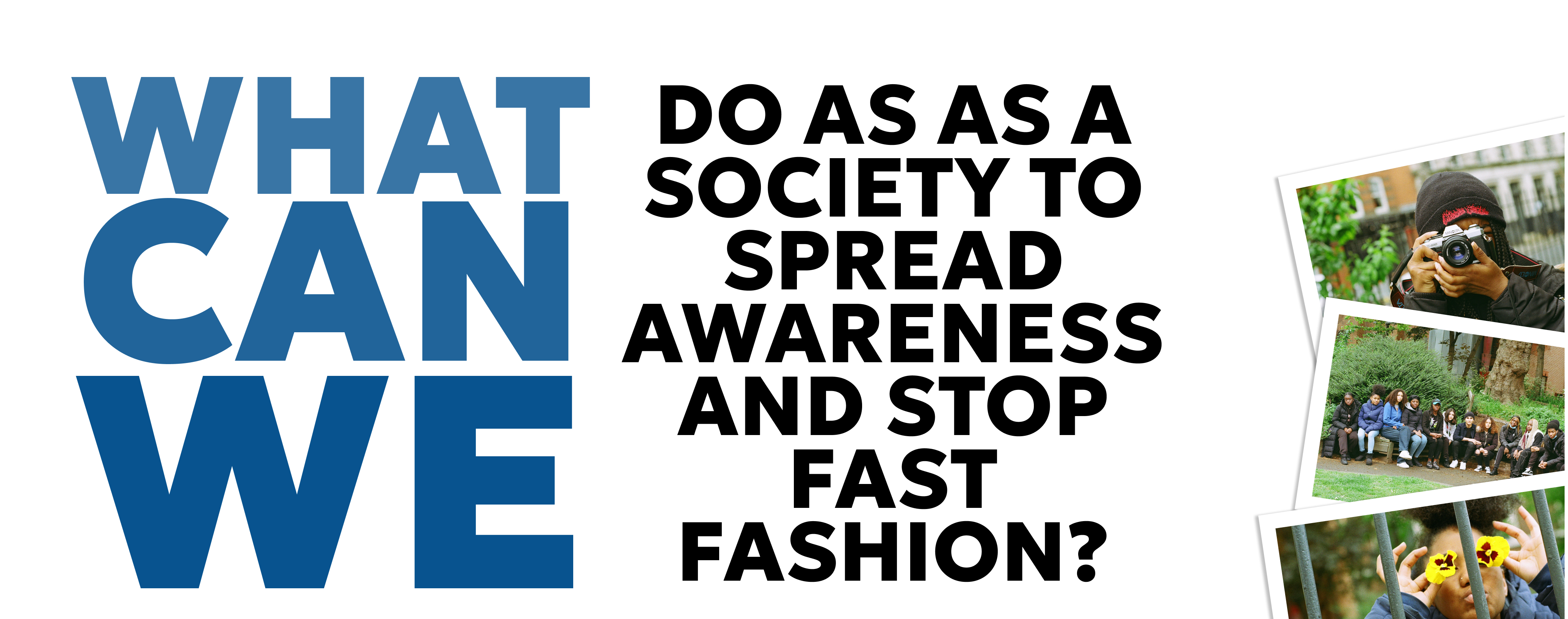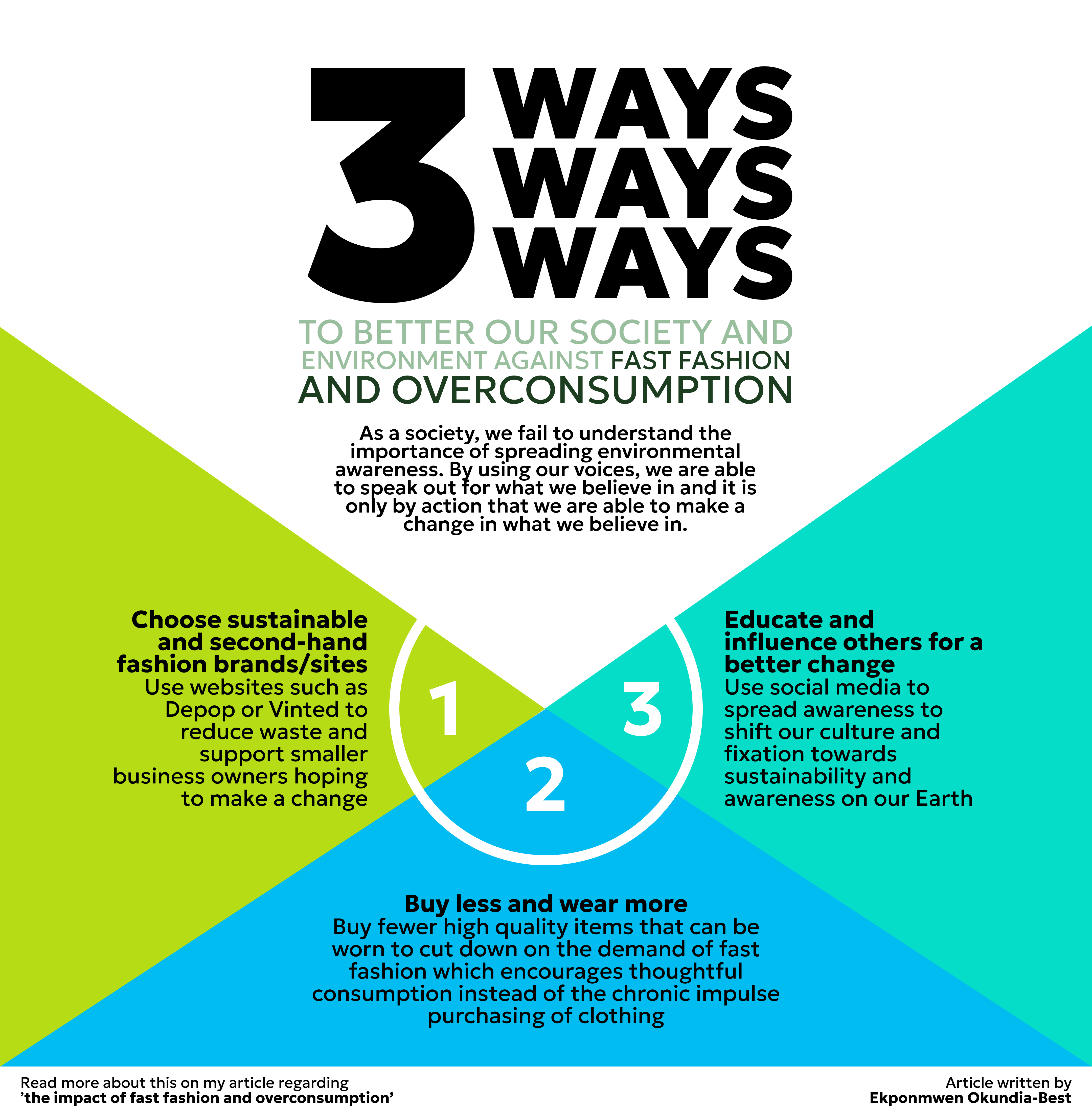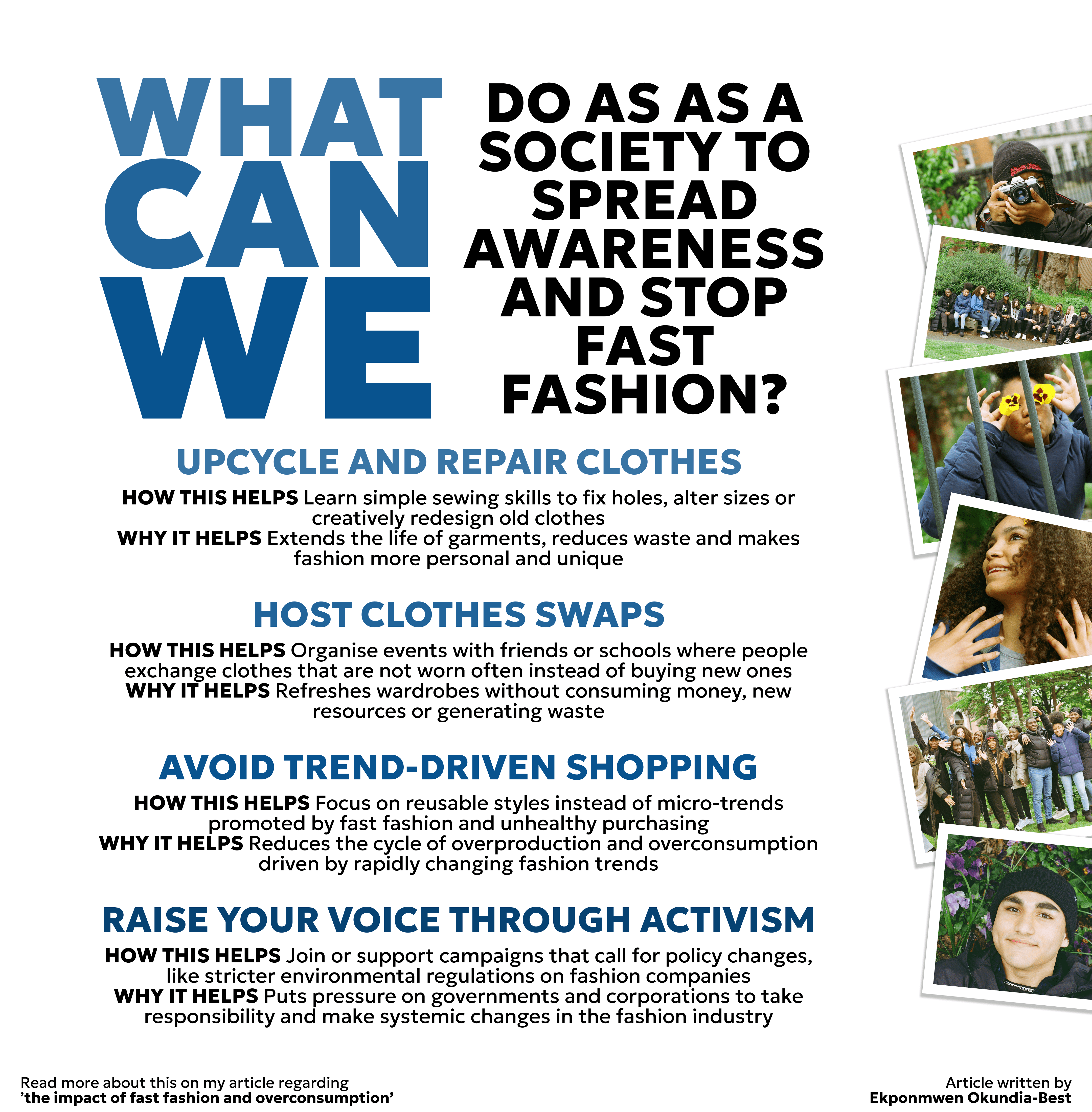Voyage Voices
The Impact That Fast Fashion and Overconsumption Have on Our Environment
Author: Ekponmwen Okundia-Best
Today, we have gradually normalised the fast pace of trends in clothes. It could be a summery July afternoon where graphic tees with swanky designs and denim ‘jorts’ would be the single most thing that you would see all month-round. Then boom, the next day, everyone wants to be wearing tracksuit co-ords, with the fliest pairs of shoes ever and matching accessories.
As teenagers and young adults, it is deeply ingrained that we, as a generation, are expected to follow and keep up with emerging trends and styles. It has been taken to such an extreme that people often judge others by their appearance or what they are wearing, rather than their character, personality, or personal interests, when meeting someone for the first time.
We do not recognise the impacts of these changing trends. Some of us, and I highlight ‘some’ (which does not include me, by the way), who have the luxury to accommodate these trends have many outfits, clothes and shoes that have not been worn in a millennium due to these changing trends. They are sitting in their wardrobe, collecting dust where they would find much more use and benefit in a charity shop, being donated to the homeless or other relatives and closely related people.
In comparison, those who do not understand the vital importance of charity work, especially in our society today, would throw those same clothes in the trash, which is then disposed of in landfills. Clothes take up to 200 years to fully decompose in a landfill – some clothes in landfills today are even older than you!


The concept of ‘fast fashion’ feeds on being able to keep its consumers happy. Whatever new outfit style or clothing item is trending on social media, such as TikTok, X, Pinterest or Instagram, fast fashion companies, brands, and manufacturers are quick to reproduce those trends and ensure that they are sent out and delivered to consumers.
An article posted by The Economist revealed that Shein adds around 6,000 new styles to its website for people to buy every single day. Talk about having something for everybody, sheesh…
Though it could be viewed as a good thing, fast fashion encourages and promotes overconsumption. With clothes being rapidly produced at a high rate to meet the demands of consumers worldwide, more resources are being used up. This means resources such as cotton, linen, wool, silk, and leather, as well as materials made from fossil fuels such as polyester, nylon and acrylic to make your clothes.
Producing clothes uses a lot of natural resources and is a major cause of carbon emissions and pollution. It has also been estimated that the fashion industry contributes to about 8-10% of global carbon production and handles 20% of all industrial water pollution. Making clothes is no small feat, but do you not think that it is a bit wild that a cotton t-shirt requires the amount of water a person needs for more than two and a half years of drinking?
As a society, and as young people, we can put an end to and raise awareness towards this emerging trend of fast fashion and overconsumption and make a change that can support our world and help it for the better. Buying from sustainable and ethical clothing brands, donating clothes at thrift stores (who would find a way better use for your clothes), or swapping to a ‘buy less, buy high-quality’ mindset, we would be able to reduce the amount of waste we produce in the environment by a noticeable amount as a result of overconsumption and the stigma that fast fashion places on our society.
Children and teenagers around the world are being held accountable by the older generation, withholding the expectation that “we need to solve the world’s most pressing problems” or that “it is you who are going to have to deal with this.” And to be fair, they are not wrong in the slightest. If we are unable to keep in mind the issues facing us, not with just fast fashion and our environment, but globally too, and fail to make any effort or form of activism against the issues and consequences that we have to deal with when we are older – then what does that say about us?

